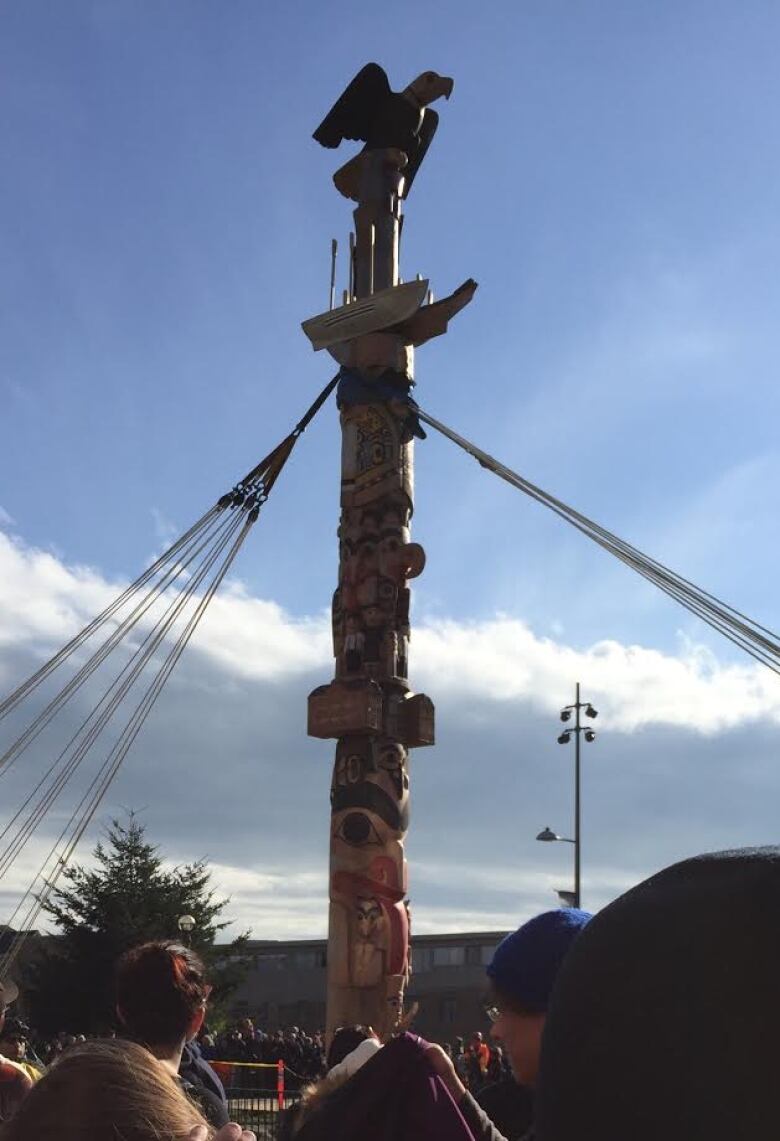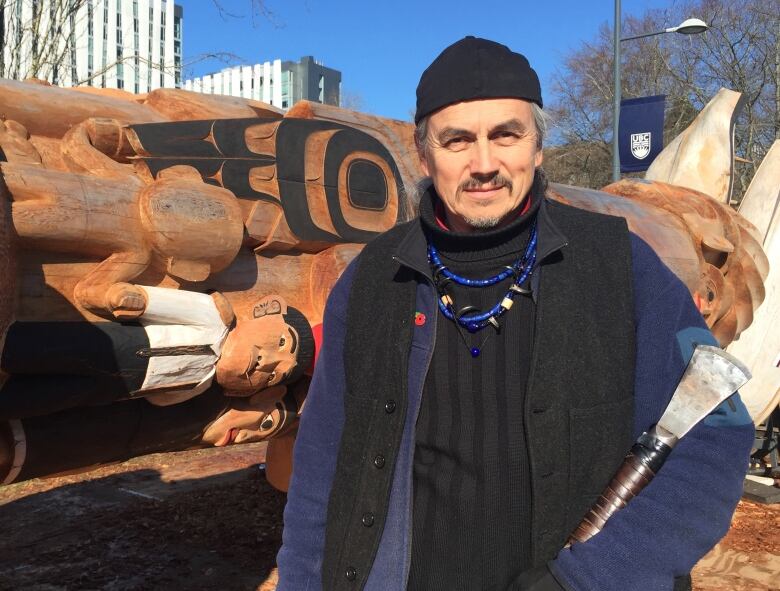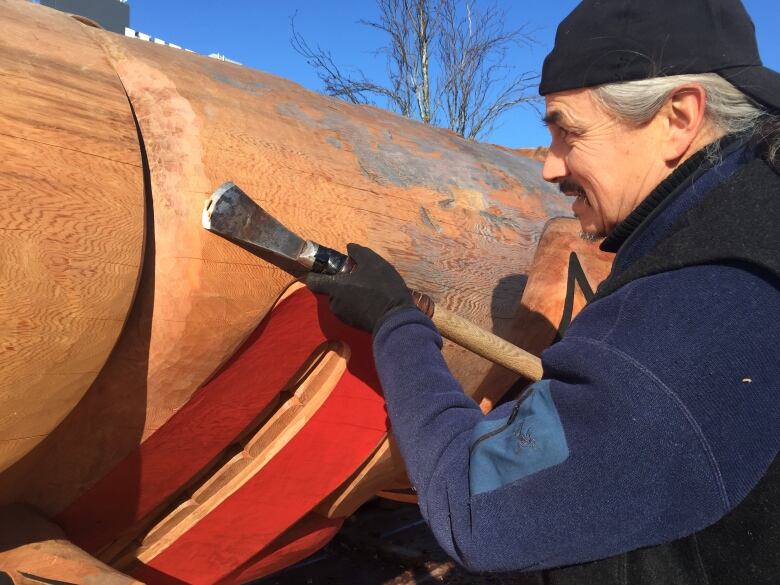Reconciliation totem pole goes up at UBC
'Its really to bring attention to the destruction [residential schools] brought forth' says carver James Hart

The University of British Columbia is now hometo a 17-metre tall totem pole that represents the victims and survivors of Canada's residential school system.

The pole was carved by Haida master carver and hereditary Chief James Hart, also known as 7idansuu.
"It's really to bring attention to the destruction [residential schools] brought forth and the effects that we're living with today," he said.
Indigenous children across Canada were forced to leave their families and attend thechurch-run, government-funded boarding centres for Aboriginal children that operated in Canada for more than 100 years.
A Truth and Reconciliation Commission on residential schools documented the litany of abuses that took place in the system including severe punishments, neglect, isolation, and sexual molestation.
The pole, carved into a 800-year-old cedar tree, has special figures representing different aspects of the residential school experience.
"It is called reconciliation. It is about a time before, during and afterCanada's Indian Residential schools," Hart explained.

Faces of children are carved into the pole, he said, with spirit figures protecting them.
A family unit, wearing the regalia of yesteryear, is supposed to represent Indigenous people getting their strength back together.
Above that a canoe and a longboat travel over water, symbolizing a people moving forward.

"It's quite amazing to see what's taking place and the people coming in to see what's going on," said Hart.
"They get it, especially the people who have gone to these residential schools. They get it right away."
The pole's thousands ofcopper nails represent the number of Indigenous children who died while in the system.Residential school survivors and their family members participated in the emotional process ofhammering in the nails.
"Some people came by for days to hammer," he said.

Hart said the carving process for this particular pole was "really tough" on him.
"It's been tough really tough working on it, with more and more stuff about residential schools coming towards me all the time. It's quite emotional," he said.

The pole was raised in a ceremony at 1 p.m. PT on April 1 in the traditional Haida manner.
The pole stands at the University of British Columbia's Main Mall between Agronomy Road and Thunderbird Boulevard, looking towards the future site of the Indian Residential School History and Dialogue Centre.

Listen to carver James Hart talk about the reconciliation pole on CBC's The Early Edition here:













_(720p).jpg)


 OFFICIAL HD MUSIC VIDEO.jpg)
.jpg)



























































































